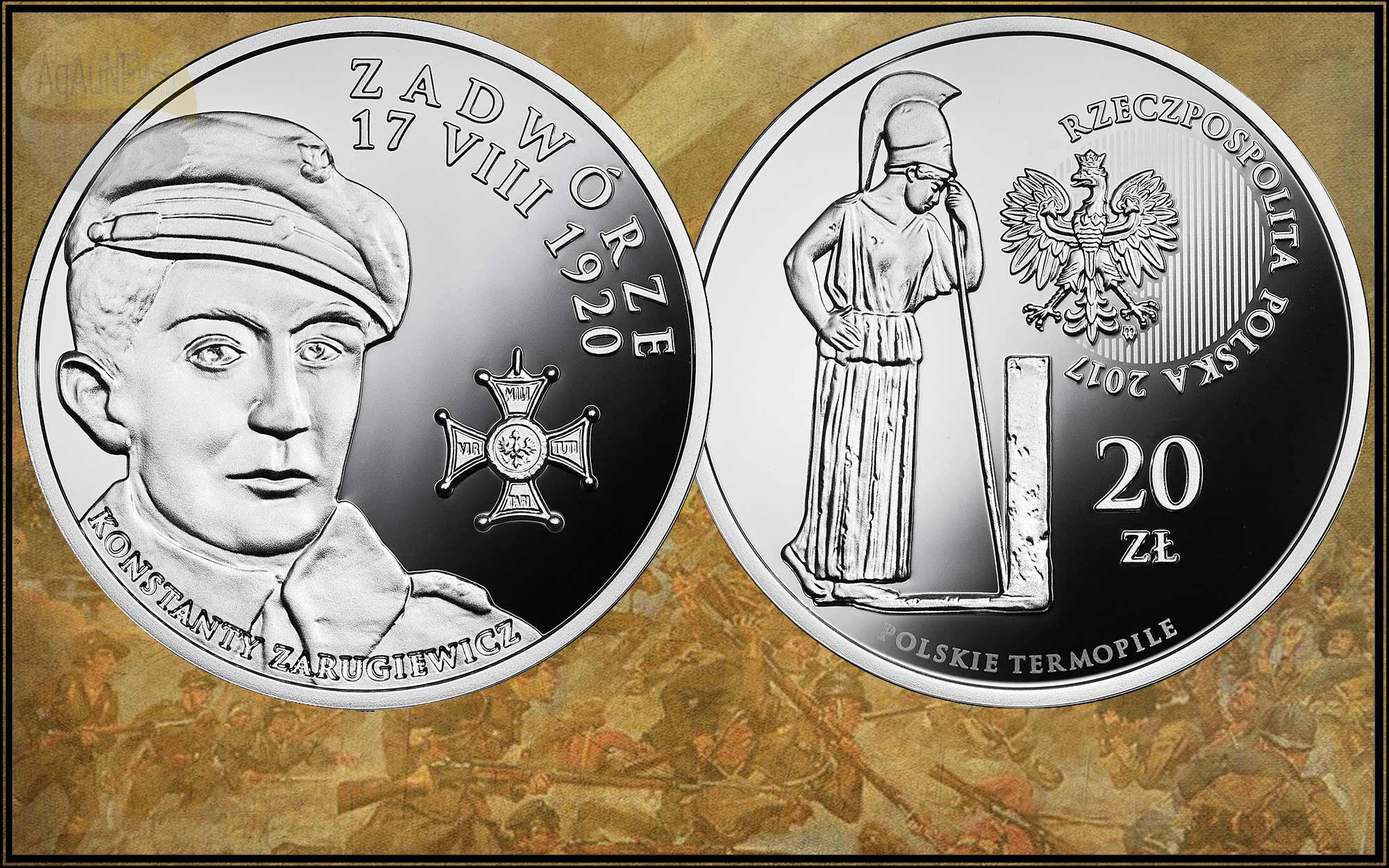Polish Thermopylae, the Battle of Zadworze, remembered on latest Polish proof silver coin
The National Bank of Poland (NBP) has launched its latest silver coin and it’s one commemorating a pivotal battle in the war between Poland and Soviet Russia that took place through 1920. The Battle of Zadwórze is called the Polish Thermopylae for good reason. The iconic story of a tiny underdog force fighting against massively overwhelming odds has been epitomised with the Spartans at the Battle of Thermopylae. The death of the Spartans was technically a loss, but the sacrifice delayed the Persians long enough for a strong force to be built up elsewhere that led to eventual victory. Such was the case at Zadworze, where a small force held up the Soviets long enough for the Poles to put together a larger army that defeated them just days later.
The coin, struck by the Mint of Poland and designed by Urszula Walerzak, is struck to a proof finish in a standard ounce of sterling 0.925 silver. The first in a series called Polish Thermopylae, it comes boxed with a certificate of authenticity, and has a mintage limited to 18,000 pieces. Available from Monday 29th May.
MINTS DESCRIPTION: On 17 August 1920 – at the same time when the Polish Army was fghting off the attack of the Bolsheviks near Warsaw – on the outskirts of Lwów near the railway station in Zadwórze, Polish defenders launched a daring aggressive assault and halted the advance of the overwhelming forces of the First Cavalry Army of Semyon Budyonny for many hours, until they ran out of ammunition. Almost all the defenders from the unit led by Captain Bolesław Zajączkowski died in the clash – 318 out of 330 soldiers were killed, while the commander himself along with the last remaining defenders decided to commit suicide in order not to fall into the hands of the Bolsheviks. In spite of the victory at Zadwórze Budyonny decided not to seize Lwów, even though he was only 30 km away from the city. Instead he hurried towards the Vistula and Wieprz rivers to support the forces of Mikhail Tukhachevsky, but as it turned out it was already too late. In this way the heroic struggle of the Polish defenders changed the fate of the entire Polish-Soviet war.
In the autumn of 1920 a burial mound was built at the site of the battle, and the authorities of the Second Republic of Poland established the Cross of Zadwórze, which honoured the defenders of the Polish Eastern Borderlands. One of the cofns containing the bodies of the defenders of Lwów from 1918 was buried with full military honours in the Tomb of the Unknown Soldier during its unveiling ceremony on 2 November 1925. This was a symbolic tribute to all those who selflessly fought in Lwów and in Zadwórze “for the unity of Poland’s Eastern Borderlands”.
SPECIFICATION
| NAME | 2017 POLISH THERMOPYLAE |
| DENOMINATION | 20 Zloty |
| COMPOSITION | 0.925 silver |
| WEIGHT | 28.28 grams |
| DIAMETER | 38.61 mm |
| FINISH | Proof |
| MODIFICATIONS | None |
| MINTAGE | 18,000 |
| BOX / COA | Yes / Yes |
The reverse of the coin features the image of one of the defenders of Zadwórze, the 19-year-old sergeant Konstanty Zarugiewicz, and the War Order of Virtuti Militari with which he was posthumously decorated. Zarugiewicz (1901-1920), who was a Polish Armenian, volunteered to join the unit of Captain Roman Abraham already on 1 November 1918, as a student of the 7th grade of the junior secondary school, and fought in the defence of Lwów. He later fought against the Ukrainians and the Bolsheviks until the end of the summer of 1919, and was repeatedly decorated. Afer returning home, he began studies at the Lwów Polytechnic, but interrupted his education already in the spring of 1920 in order to serve his country. He was a commandant during the plebiscite in Spisz, and then re-joined the Volunteer Unit of Captain Roman Abraham. He was posthumously awarded with the highest Polish military medal, the Silver Cross of the Virtuti Militari War Order (established by King Stanisław August Poniatowski in 1792 and restored by the Legislative Sejm in 1919), as well as the Cross of Valour and the Cross of Independence.
The coin dedicated to the Battle of Zadwórze – referred to as the Polish Thermopylae – opens the series of coins under this title. In the history of our homeland we have had many examples of battles where the Polish soldiers were ready to sacrifce life and limb in the name of freedom and independence, even when the overwhelming forces of the enemy rendered victory impossible from the very beginning. Konstanty Zarugiewicz and the remaining soldiers gave their lives in the Battle of Zadwórze. Were they merely hopeless romantics, measuring their abilities on the basis of their aspirations? Or maybe yet another generation giving testimony: “Poland has not yet perished, so long as we live”. The blood that has been spilled for generations creates an eternal commitment for the living. Hence the obverse of all the coins from the series “The Polish Thermopylae” will depict Athena, the goddess of fair war and wisdom. The Polish history of battles and wars teaches us that wisdom has many names. And living is not always worth more than dying in glory. Professor Jan Żaryn



Leave A Comment